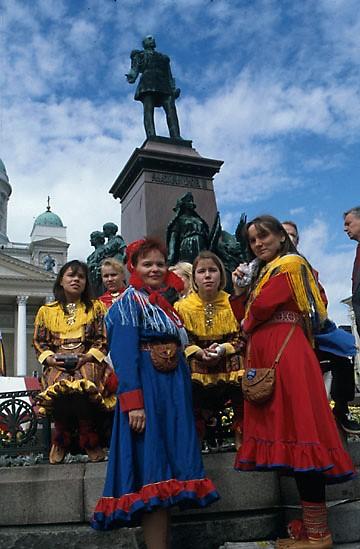Saami in Finland
There are three different Saami languages spoken in Finland. These are North Saami, Aanaar (Inari) Saami and Skolt Saami. The Saami population of Finland is around 3,000, but only just over half of them are native speakers of a Saami language.
The primary speaking area of Saami languages is Lapland, especially the Inari region. Saami (in particular North Saami) is also spoken elsewhere in Finland.
With around 400 speakers, Aanaar (Inari) Saami is only spoken in Finland within the municipality of Inari. Aanaar Saami has had its own literary language since the beginning of the 1900s.
Aanaar Saami is classified as Severely Endangered. This means Aanaar Saami is at risk of becoming extinct. Recent years have seen efforts to revitalise Aanaar Saami. This has involved teaching Aanaar Saami to children in “language nests” as well as to adults.
Skolt Saami is spoken in Finland and Russia, with the number of speakers totalling around 300. The Skolt Saami arrived in Finland from the Petsamo area of today’s Russia, which was ceded to the Soviet Union after the Second World War. Created in the 1970s, the Skolt Saami literary language has mainly been used in learning materials.
Say it in Saami is the first online phrasebook featuring Finnish, Swedish, English, North Saami, Aanaar (Inari) Saami and Skolt Saami. The website provides a look at the endangered Saami languages while at the same time helping to revitalise them, taking account of the broad non-Saami target audience and containing information about the Saami languages and cultures.
Raila Pirinen and Norwegian Sara Maret Gaup meet Saami musicians Angelin tytöt (Aŋŋel nieiddat) in Helsinki.
Photo: Jorma Lehtola.
City Saami
There are around 450 Saami calling themselves City Saami living in the Helsinki region. With the total Saami population of Finland only being 6,000, the City Saami are a significant Saami group living outside their own region.
Many City Saami were born and have grown up in a fully Finnish environment and often do not even know a Saami language. For them, being Saami is not self-evident. Instead, it is a deliberate choice. Their strength of identity varies depending on where they were born and whether both of their parents are Saami. Identity is bolstered by knowledge of the history and traditions of one’s own people. City Saami have their own associations in the Nordic countries and even in America.

